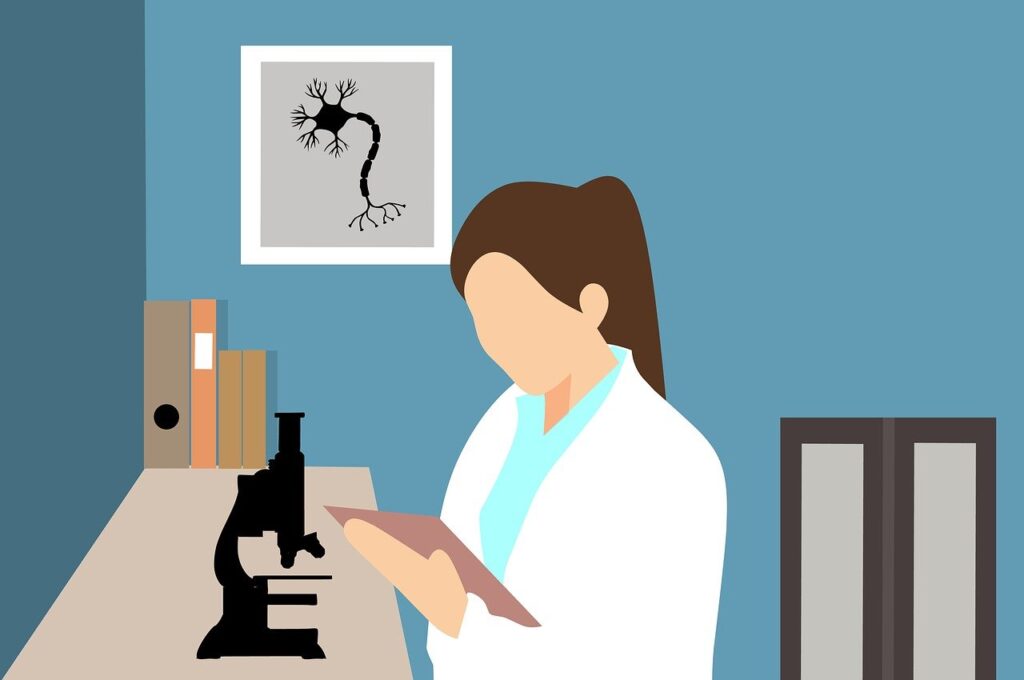“Setting up or upgrading genetic facilities? Unsure which to choose? Explore this guide comparing Genomic Labs and NGS Labs to make the right decision.”
Genetic and genomic testing market is booming. New technologies are emerging, genome sequencing becomes speedy and cost-effective. And labs become partial to fully automated.
Let me tell you that Thermo Fisher Scientific has developed an NGS platform that is only a single-point assay. During this rapidly growing genomic era, scientists, organizations and labs want to upgrade or establish genome testing facilities.
If you are one of them and want to upgrade your existing genetic lab or want to start from the very scratch, this article is for you.
In this article, I will majorly explain the difference between genomic and NGS labs and their capacities. This will help you to make a decision.
Related article: 10 Common Lab Techniques to Work in a Genetic Lab.
Stay tuned.
Key Topics:
What is a Genomic Lab?
Genomic lab simply means, a lab having facilities to test the genome of an organism. Thus, the candidate lab should have all the necessary technologies and requirements to test the genome.
For instance, DNA microarray and NGS. These two techniques, right now! Have the capability to read the entire genome. However, both are significantly different in terms of working principle and data output.
I have already written an article on the genomics lab setup. You can check out that article for more details.
What is an NGS Lab?
NGS stands for Next-Generation Sequencing technology that is capable enough to read an organism’s whole genome. Thus, it’s a part of a genomic testing facility. Illumina, Ion Torrent, PacBio and ONT are a few popular NGS platforms.
NGS works on either massive parallel sequencing (Illumina and Ion Torrent) or SMRT (ONT and PacBio) to sequence the entire genome in a few hours. Note that NGS is capable of testing the genome using only a sequencing mechanism.
Now let’s see some of the differences between the genomic and NGS lab.
Interesting read: What is First, Second and Third Generation Sequencing?
Genomic Lab vs NGS Lab:
The genomic lab studies the genome using various available techniques, in particular. Whereas the NGS lab studies the genome using only the sequencing technology.
A genomic lab should have either an NGS setup or Microarray, or both. While the NGS lab only has the NGS facility for testing the genome.
Microarray works on the principle of hybridization that can identify millions of genomic variations in a rapid time but only the known ones. It also provides gene expression data in terms of genome expression profile. It can not read the sequence.
While the NGS reads the entire genomic sequences and can identify novel as well as common genomic variants. However, it needs extensive bioinformatics setup to analyze the data.

So a genomic lab requires both NGS and microarray thus, it needs roughly ~double the investment of only setting up the NGS lab.
Choosing Genomic Lab vs NGS Lab:
Which option should you choose?
Upgrading the existing facility or establishing a genomic testing facility with both microarray and NGS capabilities empowers your lab to study both genomic variations and gene expressions comprehensively.
For example, when a doctor recommends testing for XYZ cancer and associated genes, you can provide a detailed report that includes all sequenced genes, identified variants, and gene expression profiles.
That’s pretty impressive, right? Isn’t it?
This will help doctors understand which gene alterations are associated with XYZ cancer, and the gene expression profile will help them to understand the influence of a particular or set of alterations on the condition.
NGS sequences a hundred to thousands of genes while microarray investigates gene expression for those genes. Moreover, the readily available different microarray panels also empower the lab to identify known alterations and their gene expression.
So this will increase the reporting speed with cost-effectiveness. That means, having a microarray in the lab can reduce the utilization of NGS where it is not required. NGS is a costly, labor-intensive and time-consuming process.
Check out this table for more in-depth data on what the NGS + Microarray and only NGS lab can do.
| Aspect | Lab with NGS + Microarray | Lab with Only NGS |
| Capabilities | Comprehensive genomic analysis, gene expression profiling | Comprehensive genomic analysis |
| Applications | Whole genome sequencing, transcriptomics, genotyping, SNP analysis, gene expression studies | Whole genome sequencing, transcriptomics, variant discovery |
| Data Types | Sequence data, expression data (microarray), genotype data (microarray) | Sequence data |
| Research Scope | Broad, including gene expression and genotyping studies | Focused on detailed genomic analysis and variant discovery |
| Flexibility | High, suitable for diverse research questions | Moderate, focused on sequencing-based research |
| Cost | Higher initial setup and operational costs, cost of microarray consumables | High initial setup and operational costs (no microarray costs) |
| Data Analysis Complexity | Requires integration of sequencing and microarray data, more complex bioinformatics | High bioinformatics requirements for sequencing data |
| Turnaround Time | Fast for gene expression and genotyping, moderate for sequencing | Moderate for all sequencing-based analyses |
| Expertise Required | Moderate bioinformatics and microarray data analysis skills | Advanced sequencing skills, bioinformatics |
| Applications in Medicine | Comprehensive cancer gene panels including expression profiling, multi-faceted disease studies | Detailed genomic and variant analysis |
| Future-Proofing | Versatile for adapting to new research needs | Highly specialized for in-depth genomic analysis |
| Data Integration | Combines sequencing with expression and genotype data, richer datasets | Deep sequencing data, potential for integration with other omics |
| Examples of Use Cases | Cancer studies combining gene sequencing with expression profiling, GWAS with SNP and expression data | Cancer genomics, rare disease variant discovery |
| Data Storage Needs | High, due to both sequence and microarray data | High, due to sequencing data only |
| Regulatory Compliance | More complex, managing data from multiple sources | Complex, focused on sequencing data compliance |
So,
- If you have a high initial budget
- If your sequencing and bioinformatics team is inexperienced
- If you lack experienced NGS manpower and still want to report for genome variations and gene expression profiles
- A speedy and low throughput cost-effective option, you can choose to set up a complete genomic lab instead of just an NGS setup.
Noteworthy, establishing a genomic testing lab (NGS + Microarray) will take longer to reach the break-even point compared to other setups due to higher initial investment and operational costs.
If you are confident about sample inflow, you can definitely go for it. In addition, it will greatly reduce the per-sample cost for the lab.
Contrary,
- If you have a skilled and experienced NGS and bioinformatics team
- You want a high throughput analysis where you have a high sample volume
- Want to report sequence-level variants only, you can choose NGS.
Wrapping up:
In conclusion, if you are running a genetic lab, it’s a better option to upgrade with microarray + NGS, this will equip your lab with complete genetic and genomic solutions.
While, if you are new and want to establish a genomic testing lab, I recommend going with the NGS option only. Although you need an experienced bioinformatics team, this will initially reduce your setting cost.
You can upgrade to microarray and other genetic testing like PCR, RT-PCR and Sanger sequencing, later on. Hire me to set up your genomic or NGS lab. Contact us now.


